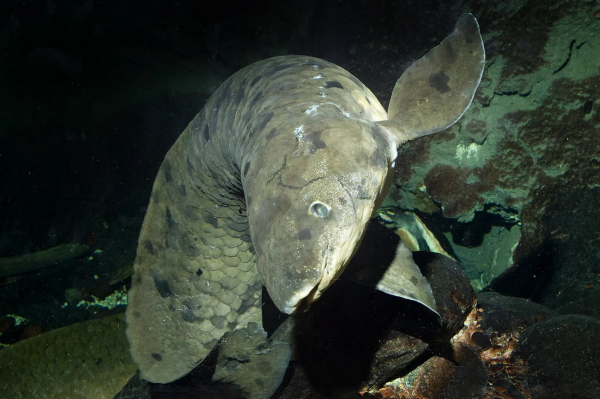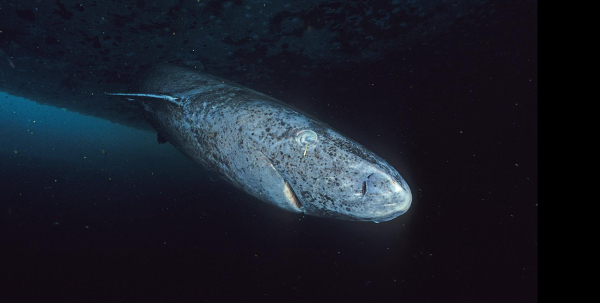
When you get to be my age, you start to think more about time—your own, and the lives of the creatures you’ve spent decades chasing with a rod and reel.
How old is that bass you just slipped back into the lake? That fat bluegill, or the striper that ran you into the backing? And what about the oldest fish in the world? Science has a few surprising answers.
Largemouth Bass Longevity
Most largies in heavily fished waters don’t make it past 8 or so—and the faster they grow, the sooner they die in general. In some California lakes where the bass stuff themselves on stocked trout, an 8 year old fish might weigh 10 to 12 pounds—but most of them don’t live much longer than that. (Admittedly a few California tubs well into the teens—both in weight and age—are caught every year from waters like Clear Lake, but in general if you live fast, you die young.
The longest-lived largemouth bass ever documented by fisheries biologists came from Mariaville Lake in New York in 1992. Researchers analyzed the fish’s otoliths—tiny ear bones that, like tree rings, hold a permanent record of age. Their study, published in the North American Journal of Fisheries Management in 1994, revealed the bass was between 23 and 24 years old. That’s twice as old as most bass ever last. It’s fairly common for fish in more northerly waters to last longer than their southern counterparts—the long winter rest seems to help their longevity, if not their growth.
How Old Do Panfish Get?
If the bass can make it into their twenties, what about the bluegills that kids catch by the bucketful every summer? It turns out they’re no slouches either. According to state agency records, bluegills commonly live 6 to 8 years in the wild. But in lightly-pressured or particularly fertile waters, they can push past a decade. The current longevity record is 11 years, confirmed through otolith analysis. While that’s not ancient by fish standards, it’s a long run for a species that rarely tops a pound or two.
Walleye Methuselah’s
Walleyes, the golden-eyed kings of northern waters, enjoy reputations not only for fillets but also for resilience. Studies show most walleyes harvested by anglers are between 5 and 10 years old, but older individuals are out there. It takes about 8 to 10 years for a walleye to reach 30 inches, biologists say. The record, documented in Canada’s Lake Erie commercial fishery, was a walleye aged at 29 years. Most fisheries biologists agree that walleyes capable of reaching 20-plus years are extremely rare, but they exist—ghostly old fish that have dodged nets, hooks, and natural hazards for decades.
Striped Bass Survivors
Striped bass have a reputation for size and endurance, and their lifespans reflect it. Tagging studies and age-sampling from the Atlantic coast reveal that stripers regularly make it past 20 years. The official record is a 31-year-old fish, taken during sampling in North Carolina. Considering their migratory lifestyle and the intense fishing pressure along the East Coast, that’s a testament to both luck and hardiness.
The World’s Oldest Lungfish
If you want to find truly ancient living fish, you have to look further afield. Take the Australian lungfish, for example. This species has been in the fossil record for over 100 million years, virtually unchanged. One famous specimen named “Granddad,” kept at the Shedd Aquarium in Chicago, was brought from Australia in 1933. Granddad lived in captivity until 2017, when he was euthanized due to declining health—at an estimated age of at least 84 years, possibly over 90.

Lungfish are remarkable in that they can breathe air directly, allowing them to survive when water dries up. Their long lifespans make them one of the most enduring freshwater fishes on the planet.
The Greenland Shark: The True Methuselah
But the undisputed champion of fish longevity swims the icy waters of the North Atlantic. The Greenland shark, a massive deep-water predator, has stunned scientists with its age. In 2016, researchers used radiocarbon dating of eye tissue to estimate the ages of 28 Greenland sharks. Their findings, published in Science, revealed that the largest individuals were at least 272 years old, with one female possibly 392 years old—or older!
That means some Greenland sharks alive today may have been swimming when the United States was still a collection of British colonies. These sharks grow slowly, mature at 150 years or more, and drift through the darkness of the deep ocean in a near timeless existence.

Greenland sharks are generally big, slow and dumb, and apparently live primarily on carrion from whales, seals and walruses, but also have been sampled with fresh fish in their stomachs—and weirdly, even a polar bear!
Putting It in Perspective
When you set the hook on a bluegill, you might be holding 5 years of survival in your hand. A trophy largemouth could be 10 or more, a walleye or striper perhaps older still. But these lifespans pale in comparison to a lungfish with decades behind it—or a Greenland shark that may outlive entire human civilizations.
For anglers, understanding fish longevity adds a new dimension to the sport. That bass or walleye isn’t just another catch—it’s the product of years of survival in a watery world full of predators, weather extremes, and the constant threat of hooks and nets. Releasing an old fish is like letting history swim away to fight another day.
And for those of us who have been fishing long enough to start thinking about our own age, there’s comfort—and a little humility—in knowing that somewhere out there swims a shark that saw the world long before we were born, and may still be gliding through the deep long after we’re gone.
— Frank Sargeant
Frankmako1@gmail.com